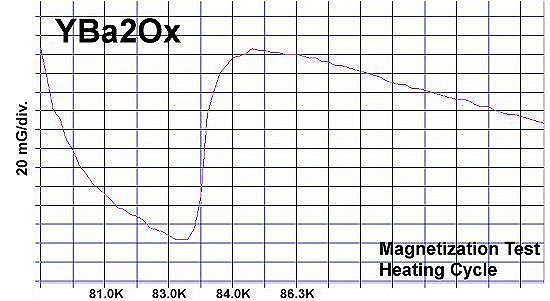
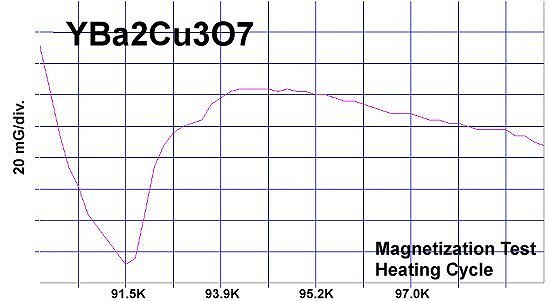


Superconductors.ORG herein reports YBCO has been found to be superconductive even when the copper component is removed - albeit with a lower transition temperature (Tc). The two plots at page top show Meissner transitions of the new YBO formulation alongside legacy YBCO. Both YBa2Ox and YBa2Cu3O7 show strong diamagnetic transitions greater than 100 milligauss; standard YBCO near 91 Kelvin and its truncated progeny around 83K.
The below right plot shows the temperature curve of the magnetometer when empty. It explains the negative slope on the far left side of both test plots.
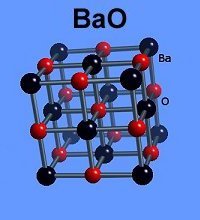
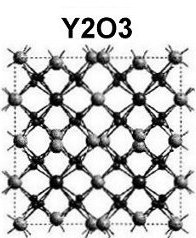
|
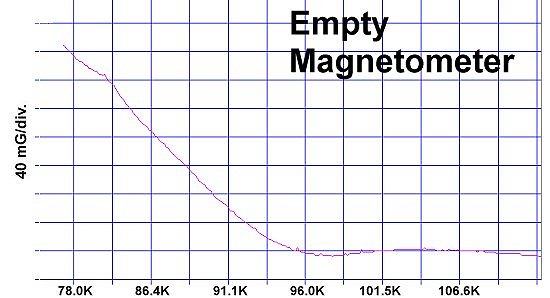
Recently it was found that (+2,+1) metals with disparate weights will produce superconductivity when positioned on opposite sides of an oxygen atom. Then it was found the same holds true for disparate weight metals with (+3,+2) oxidation states. So, the next logical step was to combine the two families and look for signs of superconductivity. YBCO was the ideal test material as Y123 is a proven mix of divalent and trivalent metals. What was not known was whether two dissimilar metal-oxide structures (shown at left) would form a complementary configuration when blended. The magnetization plots on this page confirm that they did. This new material also displayed a weak minority-phase transition near 97K, as shown below. This is probably the YBa3Ox phase. Lines have been drawn through the data points to emphasize the level shift. |
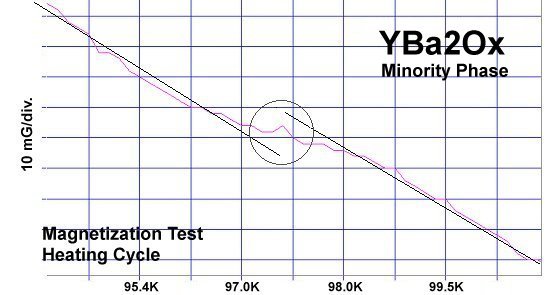
From this and other recent discoveries it can be concluded that copper, being a (+2,+1) metal, does provide facilitation and a planar structure within which diverse metals can be combined with oxygen to achieve superconductivity. But, copper-oxide is not the essential component of high-temperature superconductivity it was once believed to be.
The below stoichiometric amounts of these chemicals were used in the synthesis of this material:
BaCO3 99.95% (Alfa Aesar) 13.11 grains (decomposes to BaO during calcination)The chemical precursors were pelletized at 60,000 PSI and sintered for 10+ hours at 880C. The pellet was then annealed for 10+ hours at 500C in flowing O2. Temperature was determined using an Omega type "T" thermocouple and precision OP77 DC amplifier. The magnetometer employed twin Honeywell SS94A1F Hall-effect sensors with a tandem sensitivity of 50 mv/Gauss.
RESEARCH NOTE: These materials can be strongly hygroscopic. All tests should be performed immediately after annealing.
RE-PUBLICATION NOTICE: Elsevier Publishing, dba Elsevier Science, as well as Morris Communications, both print and broadcast divisions, are specifically prohibited from re-publishing any part of this news story.
E. Joe Eck
© 2016 Superconductors.ORG
All rights reserved.
 BACK to "News" page at Superconductors.ORG
BACK to "News" page at Superconductors.ORG